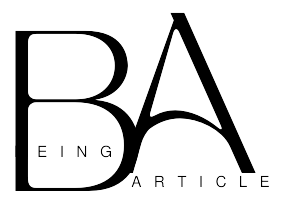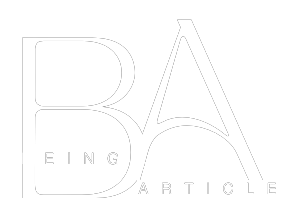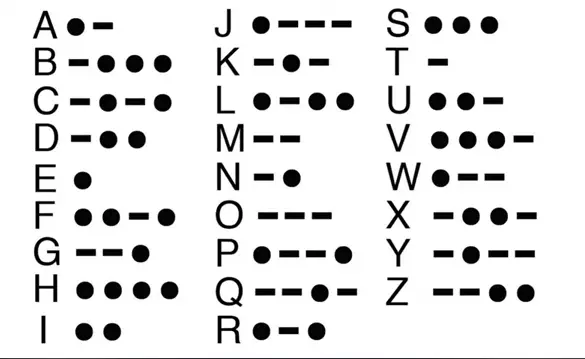How To Say Hi In Morse Code?
To say “hi” in Morse Code, you would use the letters H and I, which are represented by the following sequences of dots and dashes:
…. (H)
.. (I)
Therefore, “hi” in Morse Code is represented by:
…. ..
When transmitting Morse Code, the sender would use a device such as a telegraph or a flashlight to create the dots and dashes corresponding to each letter, and the receiver would interpret the message based on the pattern of dots and dashes they hear or see.
Morse code is a way of transmitting messages using short and long electrical pulses. This type of communication is usually transmitted by radio, but it can also be sent with a flashlight or car horn.
The International Morse Code identifies letters and numbers using a series of short (dot) and long (dash) signals. This system is straightforward and universally accepted.
Dots
Morse code is a method of transmitting information using standardized sequences of short and long marks or pulses — commonly known as dots and dashes — for letters, numerals, punctuation, and special characters. It was created for Samuel Morse’sEmorse’s electric telegraph in the 1830s and was extensively used for early radio communication starting in the 1890s.
The International Morse Code uses a series of short (dots) and long (dashes) signals to identify each letter in the Latin alphabet. Dashes are about three times longer than dots and are typically used for words, numbers, and punctuation signs.
Dots are shorter and represent a fast signal, so they’re the perfect way to say ” hi.” They’reThey’re also easy to memorize and don’tdon’t require any special equipment. Check out our good buddy Rocky below as he blinks three quick dots to send a simple “S” message.
But the biggest challenge when learning to blink in morse code is transferring your thoughts into a message. That’sThat’s why we recommend that you practice a few hours a week to get the hang of it.
Another good way to help you learn is to practice with a friend. Find someone you know who wants to learn Morse code as much as you do, and practice blinking messages to each other!
One of the best ways to practice blinking in Morse code is by using a flashlight. You can do this in a dark room across from your friend, and it’s a great way to practice rhythmic precision and focus while learning the code.
It’s even a fun activity with kids! Using a cranberry decoder ring can make this exercise more exciting.
Once you’ve mastered the basics, send a friend a secret message! You can do this by sitting in a dark room across from your friend and holding the morse code key.
Dashes
Morse code is a way to send messages using dots and dashes. Dots are short beeps or clicks, and dashes are longer ones.
Dots represent a limited number of alphabet letters, numbers, punctuation, and special characters. They can also indicate the presence of a word or phrase, such as “zombies at the tower.”
In Morse code, each letter is represented by a combination of dots and dashes. Dots and dashes are separated by pauses called space, which help receivers distinguish between individual characters. Without these pauses, transmissions would blur dots and dashes, making it difficult to identify words.
On the other hand, a dash is a long horizontal bar much longer than a hyphen. It can be used as a stand-in for commas to separate independent clauses in a sentence.
It can also join two sentences, especially in dialogue when a comma would not work well. Finally, it can be a good way to make an important statement seem more emphatic or to signal a break in the action.
The general rule is that dashes should be three times longer than dots. This difference in timing ensures that receivers won’twon’t get confused between the symbols and helps them understand the meaning of your message.
To say hi in Morse code, you can use a single dash. This will allow you to communicate quickly and easily.
Blinking is another way to send Morse code signals. Dots and dashes are represented by how much time you spend blinking, so dot blinks will be flutters-like blinks or a quick series of squints, while dashes will be more pronounced blinks as if you are resting your eyes for a few seconds.
If you are looking for a fun way to learn the basics of Morse code, try learning how to blink your characters in code! In addition, you can find many free resources on the Internet, including videos, books, and podcasts.
In addition to written communication, radio operators still use Morse code for emergency signals. It is also helpful to those who have physical disabilities or have their abilities impaired by stroke, heart attack, or paralysis.
Letters
When it comes to communicating, nothing beats the storied Morse code. This code system sends messages and signals distress over long distances. It was developed in the 19th century by Samuel Morse, one of the inventors of the telegraph.
Morse code consists of signals that represent letters, numbers, and punctuation. It can be transmitted using a radio, electrical current, or light. It can also be used to make sounds.
To learn morse code, start by associating letters with their sound equivalents. This will help you remember the code without focusing on a series of dots and dashes.
Next, try sending a message with your computer. You’llYou’ll need a computer, some code, and an LED module.
In this activity, you’ll build a program to blink out a “HELLO WORLD” message using Morse code. In addition to the basic timing, you’ll need to delay before transmitting a character and between characters.
You’llYou’ll also need a timer to measure the amount of time required for each letter and the number of times per second. This information will help you choose the best length for your dots and dashes.
To send a blinking HELLO WORLD, use a combination of standard Morse code and a variation called Farnsworth. Dots last for one second, dashes for three seconds, and spaces between dots and dashes, characters, and words take one second, three seconds, and seven seconds, respectively.
Once you have the timing for each part, you can build your program to blink out a message. Your program should have a button that presses when a certain character is ready to be blinked out and a button that releases when the blinking has completed.
This will help your program to delay before transmitting a character and avoid the risk of sending the same letter twice in a row. It will also save you time if you’re trying to blink multiple messages simultaneously.
The first few letters are easy to learn, but if you want to get more complicated, you’ll need to practice with the computer. To help you get started, a few free programs will teach you to receive and decode morse code. They’reThey’re available for any computer platform, and they can be very useful to help you learn to communicate in this ancient code system.
Blinking
Blinking is a way of saying hi in morse code. The technique is simple and easy to learn, so it is a good skill to have in your back pocket for any situation you find yourself in that requires quick communication.
It is also useful for survival situations. For example, if you are trekking through the wilderness or get lost in the woods, blinking morse code can help you communicate with others nearby. It can be used with a flashlight, whistle, or radio.
The blinking method is based on a series of electrical pulses sent to the receiver. The pulses are spaced in a specific way to make them easier to decipher. The timing rules are a very important part of this method. Without them, the transmission would be a blur of dots and dashes, making it impossible for the recipient to recognize which letter was being transmitted.
Three spacing rules define the length of each character and help the recipient understand what they are receiving. The time gap between dots is 1 unit, the time between characters is three units, and the time gap between words is seven units.
In the telegraph system that Samuel Morse and Alfred Vail developed, these electric currents could be transferred over wires to send messages over long distances. This required a code representing alphabetic characters, numbers, and punctuation marks.
Initially, this code represented the entire alphabet through varying-length pulses called “dits” and ” dahs.” Later on, the International Morse Code was created to represent only letters and numbers, using only a set number of dashes.
Today, the International Morse Code is still used by telegraph operators worldwide. In addition, ham radio operators often use it to communicate quickly and easily with other people.
It is also useful in other ways, such as sending a distress signal for boats or other vessels needing assistance. During World War II, it was commonly used in sea rescues. It was so successful that it is still used for communication on ships at sea.
FAQ’s
What is Morse code?
Morse code is a system of communication that uses dots and dashes to represent letters and numbers. It was developed in the early 19th century by Samuel Morse and is still used today, particularly in emergency situations and by amateur radio operators.
How do I say “hi” in Morse code?
To say “hi” in Morse code, you would use two short signals followed by one long signal. The short signals are represented by dots and the long signal is represented by a dash. So “hi” in Morse code is: “dot dot dash dash dot”.
How do I transmit Morse code signals?
Morse code signals can be transmitted using a variety of methods, including sound, light, and electrical pulses. One common method is to use a telegraph or a Morse code key, which allows you to create the dots and dashes by pressing a lever or button.
Is Morse code still used today?
Yes, Morse code is still used today, particularly in emergency situations and by amateur radio operators. It is also sometimes used in the military and aviation industries, where it can be more reliable than other forms of communication.
Can I learn Morse code?
Yes, anyone can learn Morse code with practice and dedication. There are many resources available online, including websites and apps that offer tutorials and practice exercises. You can also join a local amateur radio club or take a class to learn Morse code.
What are some common uses for Morse code?
In addition to emergency and amateur radio communication, Morse code has been used in a variety of other applications over the years. It was used in telegraph systems, early telephones, and even in some early computer systems. Morse code has also been used in music and art, and has even been incorporated into fashion design.



















